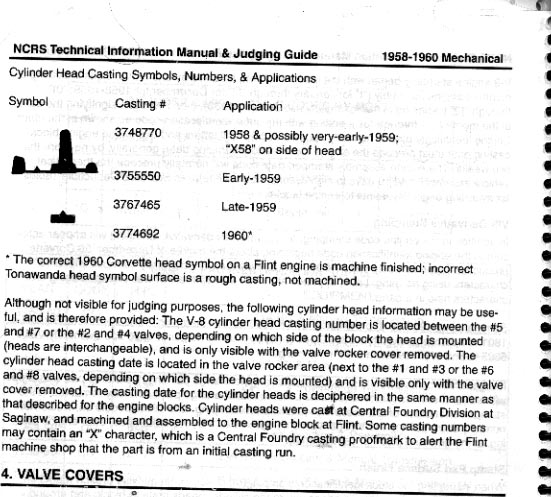The above head is called double hump because of the shape of the "casting id symbol" on the end surfaces. (See left photo).
This head is part of a pair made in month J = Oct., day 10, 1966. (Casting Date code = J106)
This casting number, 3890462 indicates usage on late 1966 and early 1967 327 Engines in Chevy (Pass), Chevy II, Chevelle and Corvettes. It was also used on 1967 Camaro 302, 327 and 250 engines. An Oct. casting date indicates usage in a 1967 model.
The above small block head is called a "power pack" head because of the smaller than standard combustion chamber and the shape of the "casting id symbol" on the end surface. This mark is in the same places on the head as the "double hump" mentioned above. Note that many other symbol shapes were used.
This head is part of a pair made in early 1960.
This casting number on these heads, 3774692, indicates correct usage on all 1960 - 1961 Corvettes, and other Chevrolets with the optional 230 HP engine. The standard 170 HP passenger car heads do not have the triangle, but a "plain" rectangular symbol.
All 1960 Corvette heads had this casting number, but not all "power pack" heads have the same casting number.
The example shown above was machined in Flint, MI in 1960. The casting id symbols were "broached" and, as a result, present a smooth surface, as in photo 3. In Tonawanda, NY (Just north of Buffalo) Chevrolet made the same parts with the same casting number, 3774692, but they were not broached in this manner. As a result, the Tonawanda versions presented a rough sand cast surface on the ID Marker areas.
Details like this are pointed out in the Judging Manuals from the National Corvette Restorers Society (NCRS) available at www.ncrs.org. See MichiganNCRS.org also.
